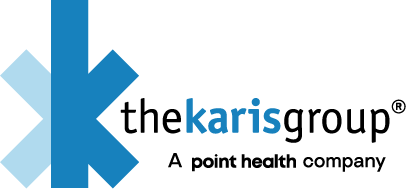It's no secret that health care is expensive, but it becomes even more expensive when people don't understand their options. This causes costly decisions not only for their wallet but also their health.
Since there's so much confusion and frustration with health care, many people resort to being passive in their medical care. A few examples of passivity in health care are: going to the first hospital found on Google, not negotiating a bill, paying the full price for a prescription, or not getting a second opinion for a major procedure.
Below are three main reasons people aren't active in their health, and the patient advocacy solutions to each.
1. Confusion
One survey found that 96% of the 2,000 people interviewed don't understand basic healthcare terms such as "deductible" or "co-pay." In addition to misunderstanding the healthcare industry, people also get confused by their employers or insurance groups constantly changing plans. Employers may mean well by offering several benefits through different vendors, but if there isn't clear communication, how can they ever expect their employees to utilize the tools meant to help them?
A key component of patient advocacy is education. One way to keep people educated about their healthcare plans is through concierge-style services such as Karis HealthPro. In this service, a patient advocate expert reaches out to each individual member to create a personal profile to choose the best care for them based on affordability and quality of care. These concierge-style patient advocacy tools can even lead to patients discovering there are certain costly procedures they don't need after all, thus saving them a lot of time and money.
2. Not Seeking Second Opinions
This problem stems from confusion and a societal norm to do whatever a doctor suggests. We're not saying that people shouldn't trust medical professionals, but they should seek second opinions or alternative options to medications and procedures. According to a Mayo Clinic study, 88% of patients who get second opinions are sent home with new or refined diagnosis and a completely different care plan.
An area of patient advocacy that greatly helps this issue is navigation. Using navigation services guides patients to the best healthcare decisions before a major procedure or other healthcare event. There are also second opinion services people can use to speak with a board-certified doctor from the comfort of their home via video chat or phone call.
3. Not Shopping Around
People often don't know who to trust or fall victim to the "power of the lab coat," so they don't shop around for better procedure, medication, and service prices. People also aren't asking their providers about discounts, even though one study found that 61% of people who asked for a discount got one.
Navigation is a great patient advocate service for this issue when there's time to shop around beforehand, but for patients who needed something done right away and ended up being overcharged, there's still hope. Negotiation is a concierge-style resource where a knowledgable patient advocate assists in lowering the cost of a medical bill that's already been issued.
When equipped with the right tools that only patient advocacy programs can offer, patients become more active in their health care, which means cost savings, time savings, and better health.
Want to learn more about Patient Advocacy? Check out our White Paper, "Patient Advocacy: Effective Cost Containment Members Actually Want."




.png)

